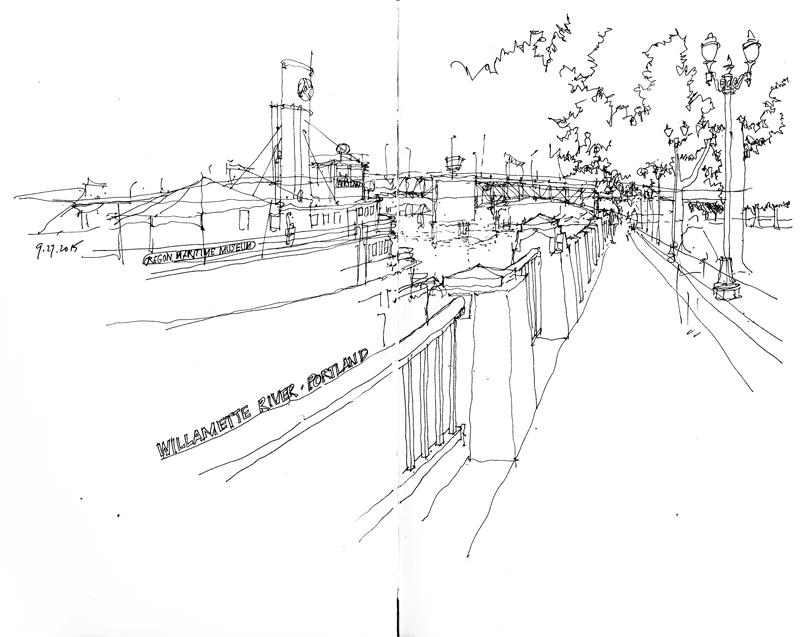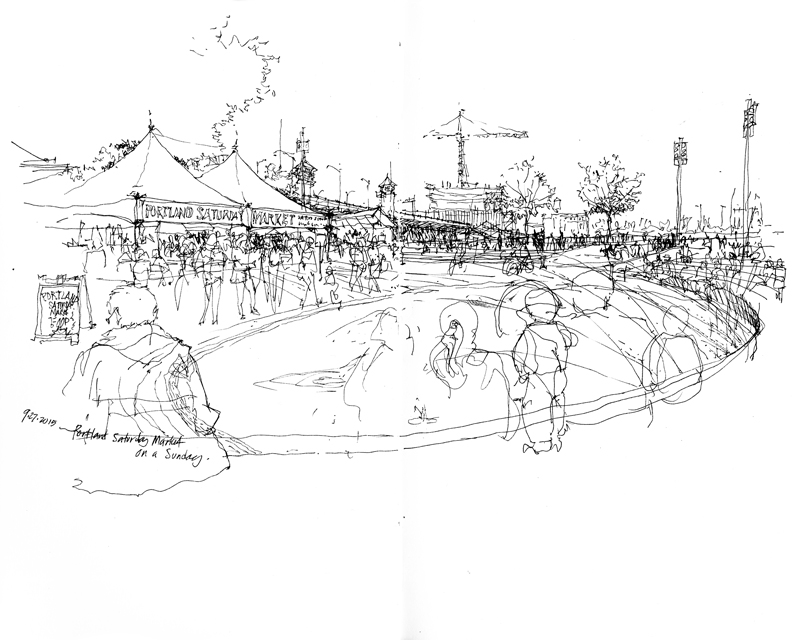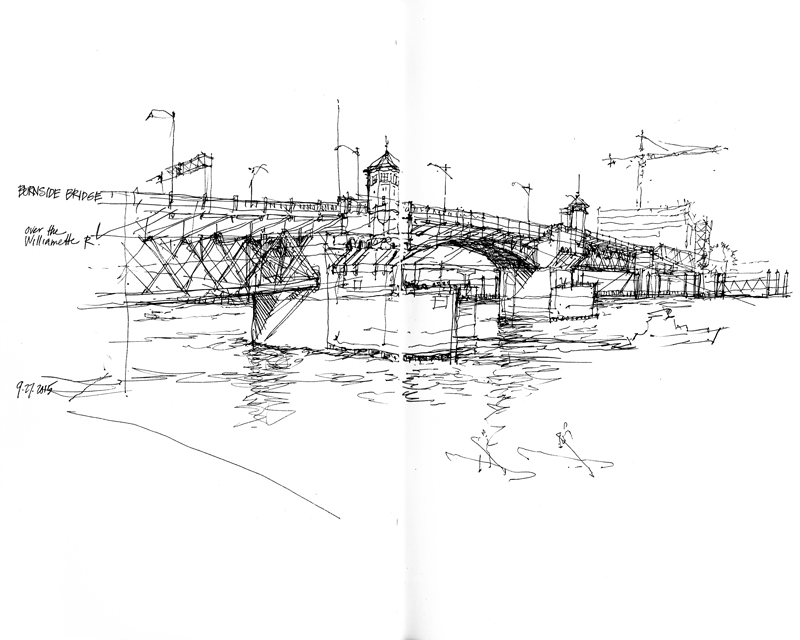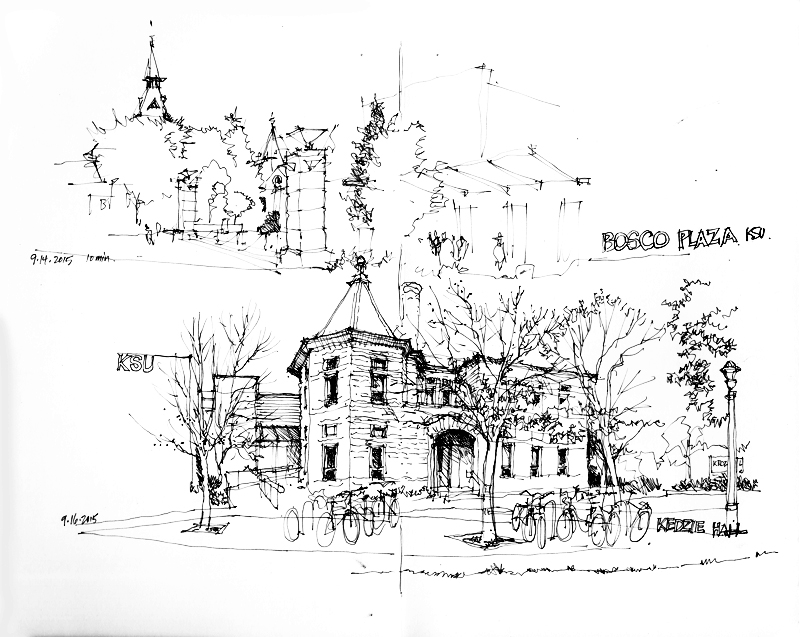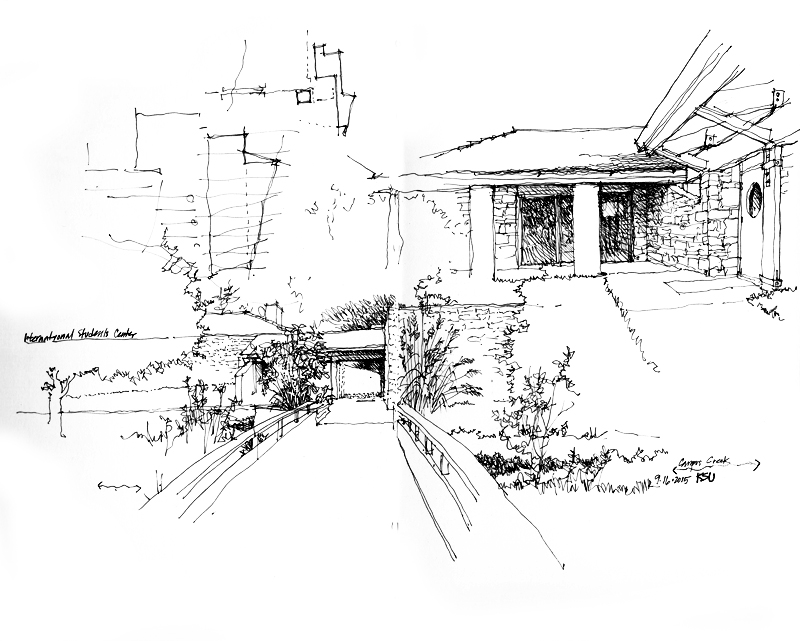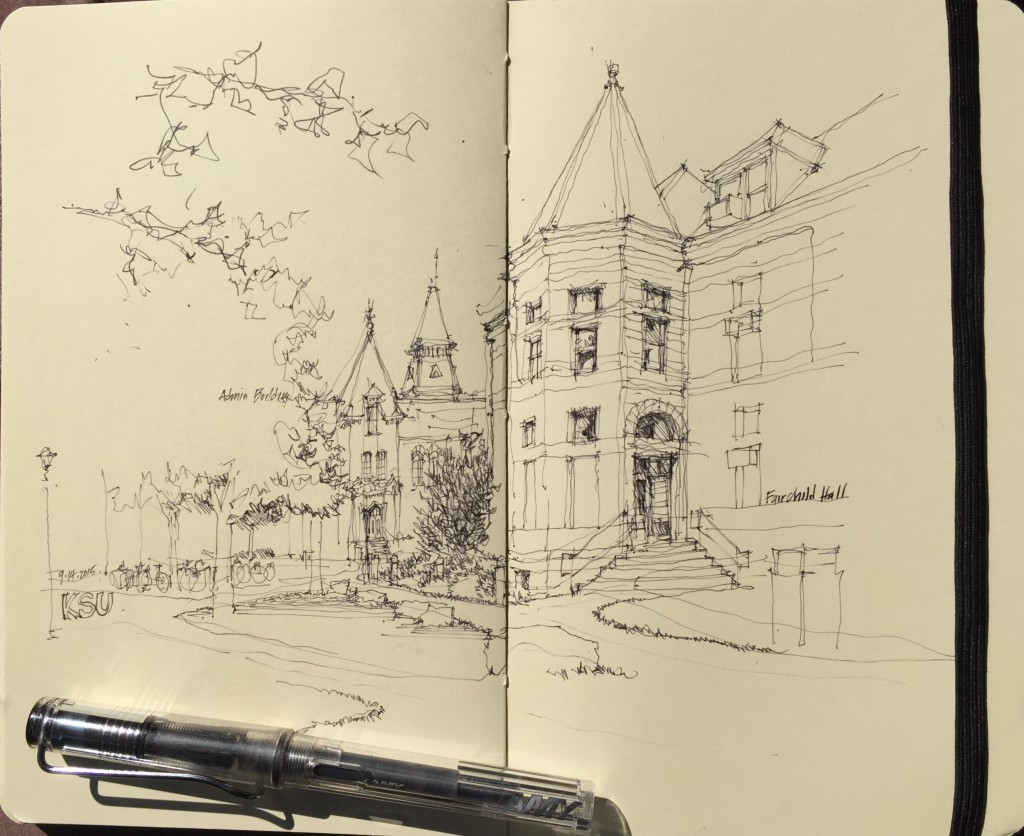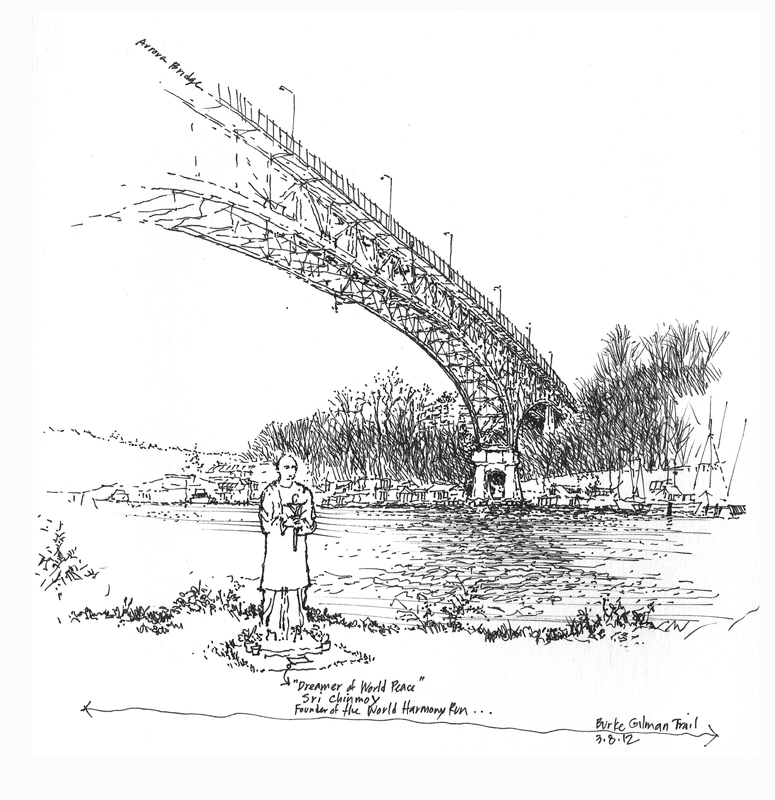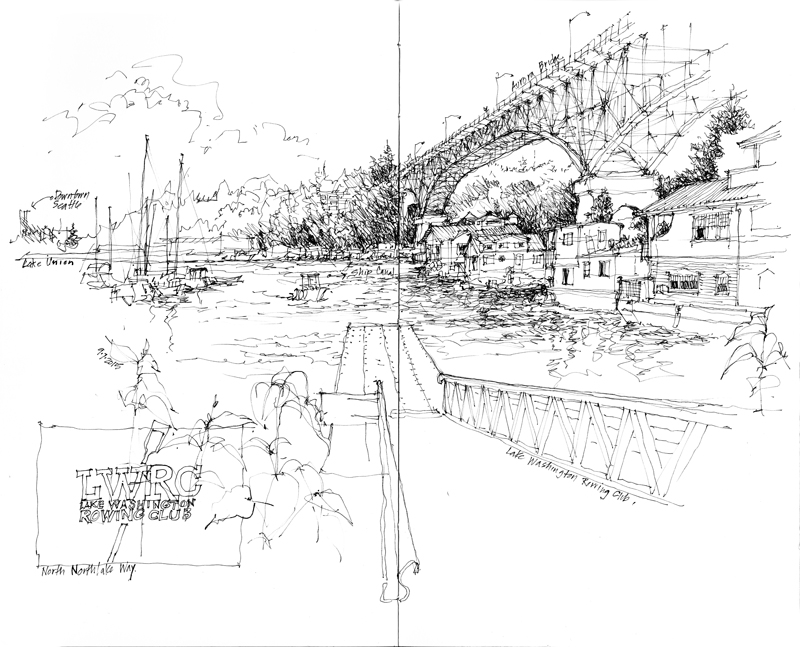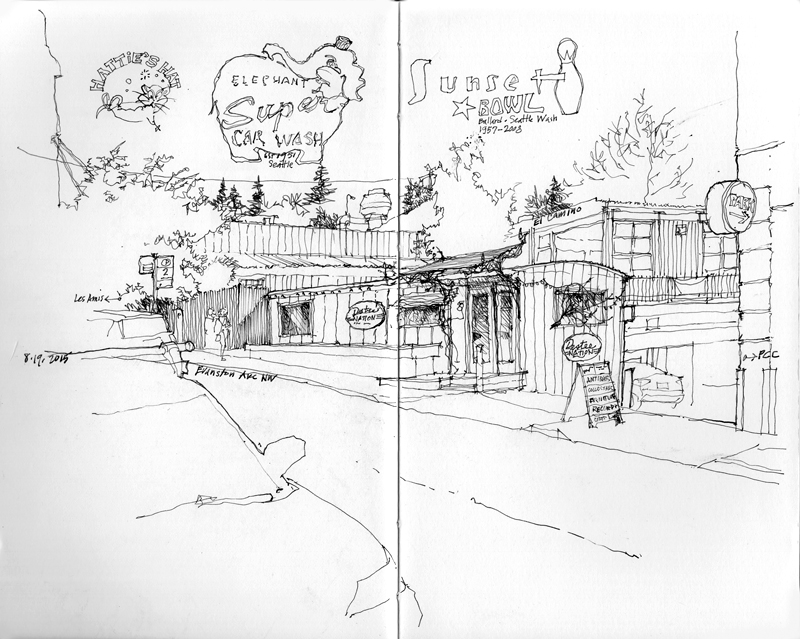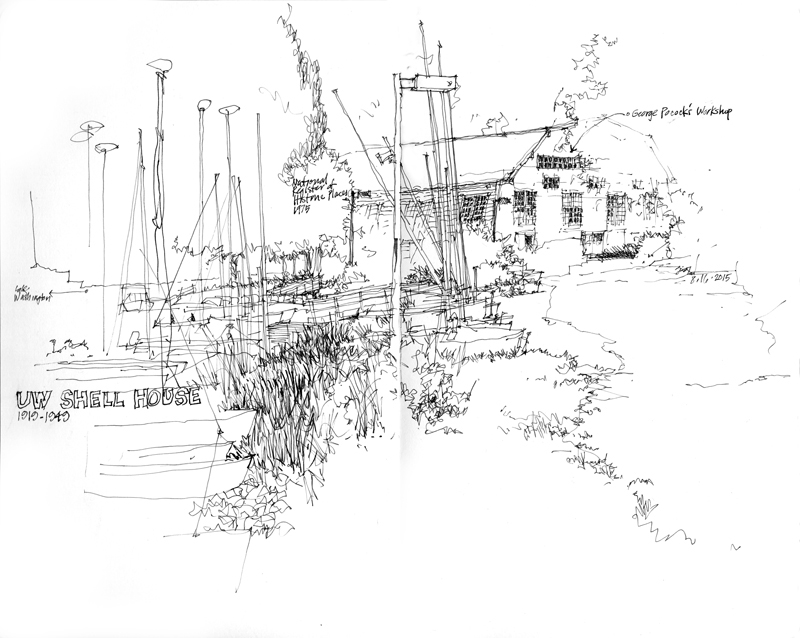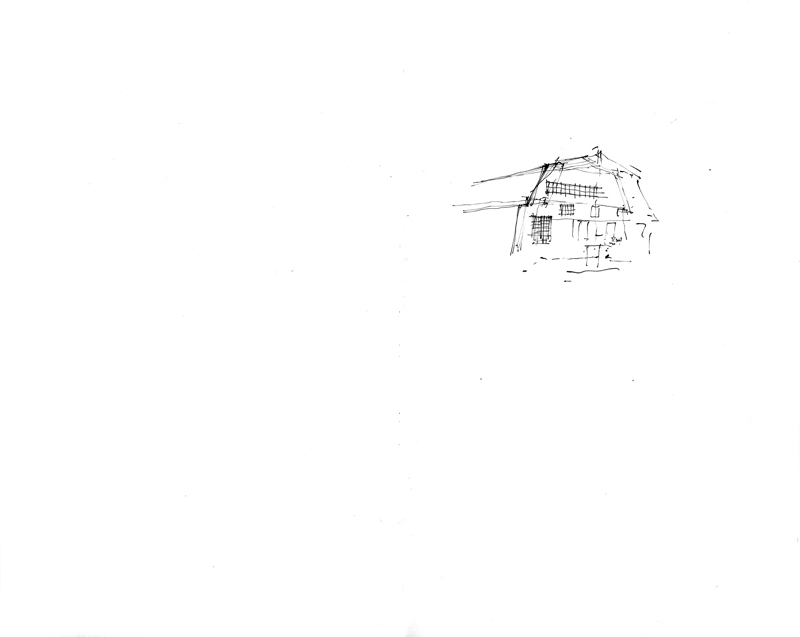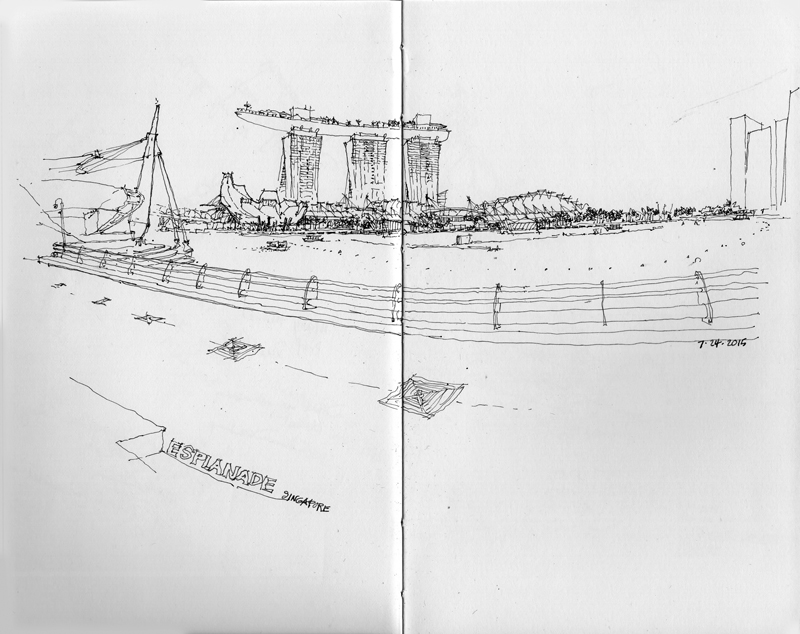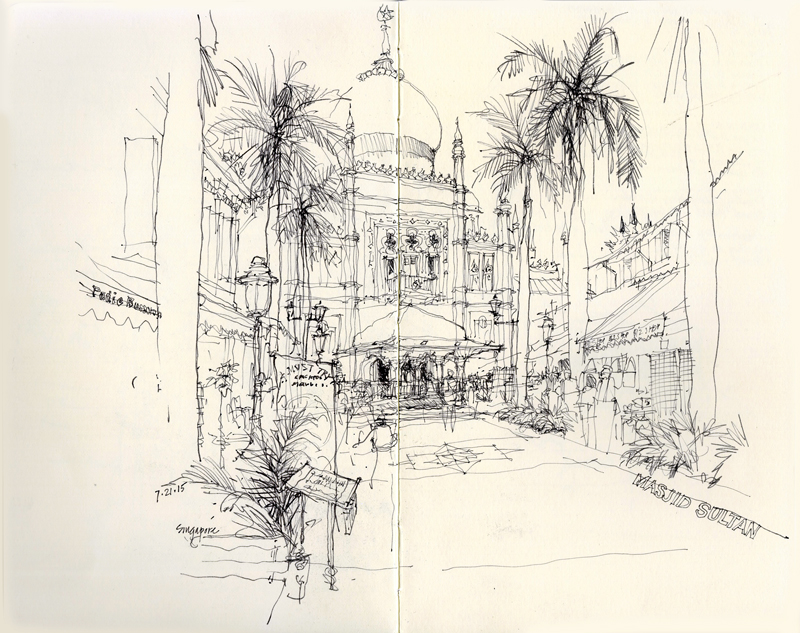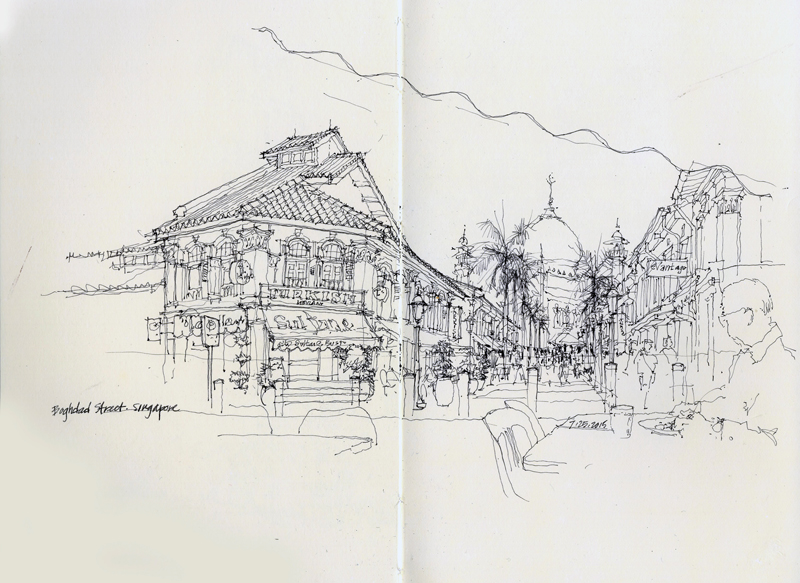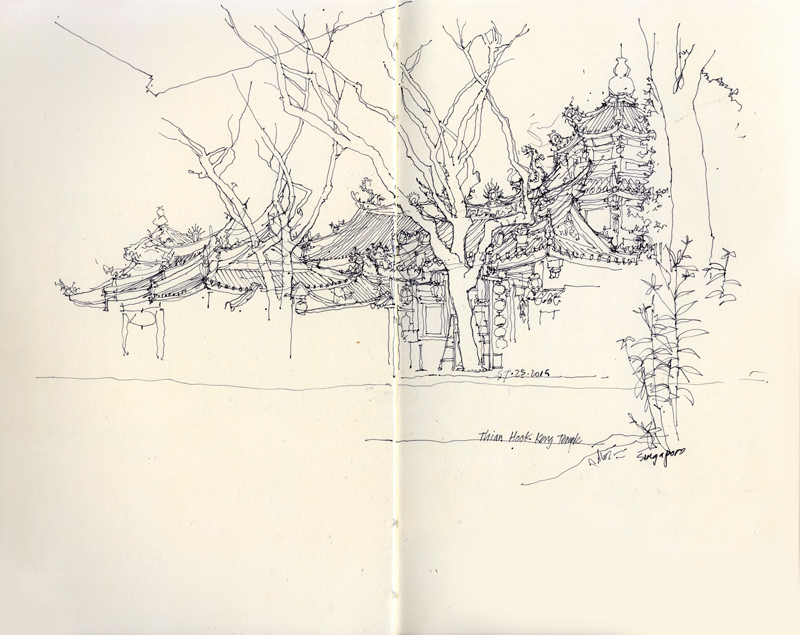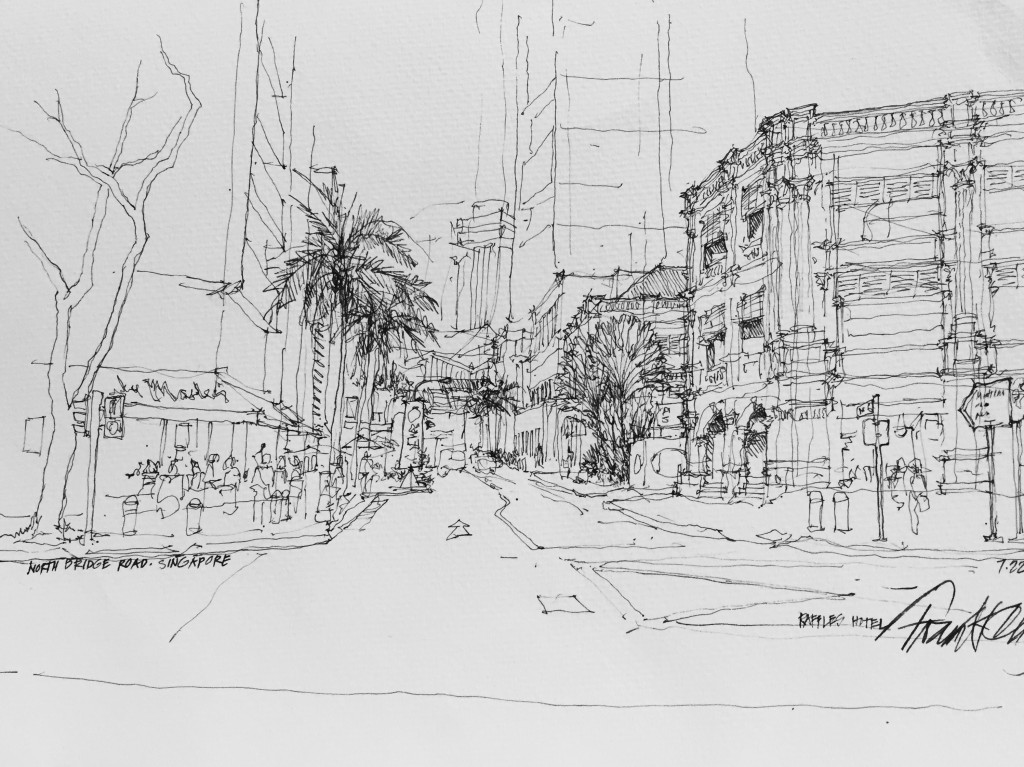I spent an enjoyable weekend in Portland co-teaching a Line-to-Color workshop with Gail Wong. We had the benefit of pleasant weather, Portland offers great sketching sites, and we had the opportunity to work with an ardent group of sketchers. As in any workshop, there is little time to sketch on one’s own but I managed to do one before the group met on Sunday morning and a couple more later on in the afternoon when members of the Portland Urban Sketchers joined our group at the Portland Saturday Market site on the riverfront.
Category Archives: Urban Sketchers
KSU Campus II
Here are a few more sketches from my recent visit to Manhattan, Kansas. The second is of the International Student Center, which I studied because of its unusual inward orientation to a courtyard, unlike most of the other structures on the KSU campus.
I did this very quick sketch during a walk through the 8000-acre Konza Prarie, a former cattle ranch and now a tallgrass prarie preserve in the Flint Hills of northeastern Kansas, jointly owned by the Nature Conservancy and Kansas State University, which conducts ecological research and manages conservation in the preserve. I drew only the path ahead of me and a treeline in an arroyo between two ridges. All of that white space you see are prarie grasses, a mix of big bluestem, little bluestem, Indiangrass, and switchgrass.
KSU Campus
Two Views from Under the Aurora Bridge
Three years ago, I sketched this view from the Burke-Gilman Trail of the Aurora Bridge as it spans the Ship Canal in Fremont. Yesterday, I took the opportunity of the sunshine to draw this view from further east along the Burke-Gilman, where the dock of the Lake Washington Rowing Club juts out into the waters where the Ship Canal meets Lake Union. On the right, nestled below the Aurora Bridge, you can see a few of the many houseboat communities along the shores of Lake Union.
Destee-Nation Shirt Company
This is Destee-Nation Shirt Company’s retail outlet in the Fremont neighborhood, snuggled next to Les Amis just west of the PCC market. Destee-Nation designs, silk-screens, and sells T-Shirts featuring the logos of locally owned small businesses and other cultural landmarks of Seattle. In addition to gaining permission to use these icons, Destee-Nation gives a percentage of each sale to the neighborhood diner, vintage record store, or mom-and-pop shop being represented. A few are included in the scene above.
Since its beginning in 2004 at its Greenlake warehouse here in Seattle, Destee-Nation has since expanded its offerings to include the logos of small businesses in other states, such as Arizona, California, Texas, and Hawaii.
UW Shell House
Although this structure was intended to serve as a hangar for military seaplanes, it wasn’t completed until 1918—too late to be of use to the navy. So in 1919, it became the shell house for the rowing crews of the University of Washington. If you read The Boys in the Boat by Daniel James Brown, you would know the story of how the rowing crew from the University of Washington—sons of loggers, farmers, and fishermen—defeated elite European teams and won the gold medal in eight-oar crew at the 1936 Olympic Games in Berlin. The shell house was designated a Seattle Landmark in 1974 and listed on the National Register of Historic Places in 1975.
In sketching, we have good days and bad days. This day was not a good day for me. This spread shows my first attempt at trying to capture the scale and proportions of the shell house. Rather than continuing on and making adjustments, as I usually do, I simply turned the page to begin anew.
The Varied Faces of Singapore
One final post on Singapore. Walking around the city during the Urban Sketching Symposium, I drew a few scenes that illustrate diverse aspects of this metropolis, with evidence of its Colonial past, ethnic neighborhoods, and modern skyscrapers co-existing in a modern Asian city-state. In the last sketch, the circle with SG above the number 50 refers to this year being the 50th anniversary of Singapore’s separation from Malaysia and formation as an independent republic on August 9, 1965.
Masjid Sultan
The first day in Singapore, I wandered over to the Kampong Glam neighborhood of Singapore to sketch the Masjid Sultan (Sultan Mosque). Constructed in 1824 as a one-story structure for Sultan Hussein Shah, the first sultan of Singapore, the mosque was remodeled and enlarged in 1932 to its present form. Relative to the surrounding street grid, the mosque was skewed, perhaps to orient the mihrab to Mecca. It was important for me to capture this subtle shift as I drew this view looking down the pedestrian way of Bussorah Street.
A few days later, I again visited the area hoping to draw one of the side streets. Instead, I chose to enjoy a refreshing iced coffee at an outdoor cafe with a view both of the Masjid Sultan as well as some the shops along Baghdad Street.
Two Chinese Temples
The day before the Urban Sketching Symposium started in Singapore, I wandered along Waterloo Street, the site of my workshop. I came upon this Chinese temple, seemingly grafted onto a three-story office building.
In contrast to the Waterloo Street temple is the Thian Hock Keng Temple in the Chinatown district, which is one of the oldest Hokkien temples in Singapore. The more traditional layout was completed in 1842 to accommodate Chinese immigrants giving thanks for a safe voyage. Because of the heavy street traffic, I decided to focus on the composition of tiled roofs and animated ridge and hip lines, leaving the rest to the imagination.
Raffles Hotel Singapore
The Raffles Hotel is an icon in Singapore, having been established in 1887 by two Armenian brothers. Named after Stamford Raffles, the founder of modern Singapore, it was designed by the architect Regent Alfred John Bidwell of Swan and Maclaren.
This view, looking down Seah Street from North Bridge Road, is one of the many drawings done during the 6th International Urban Sketchers Symposium in Singapore that wIll be auctioned off to benefit the urban Sketchers organization.

